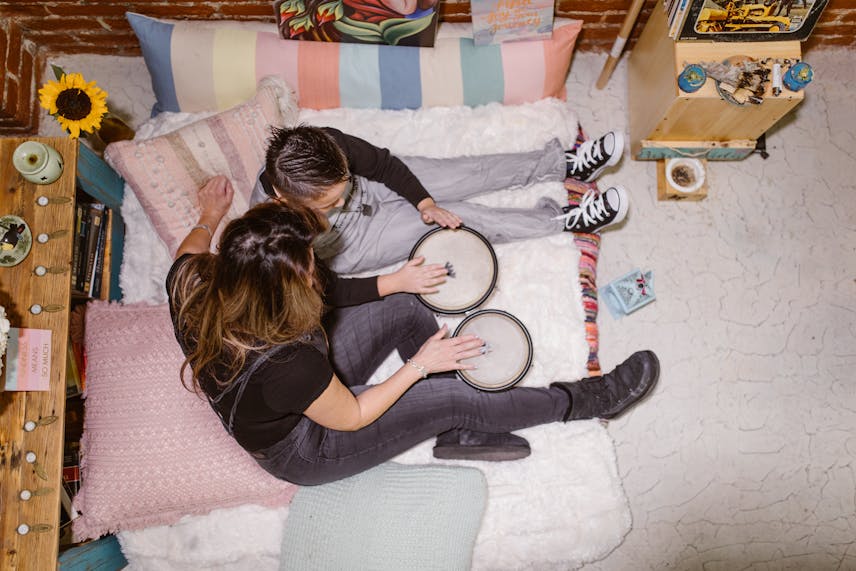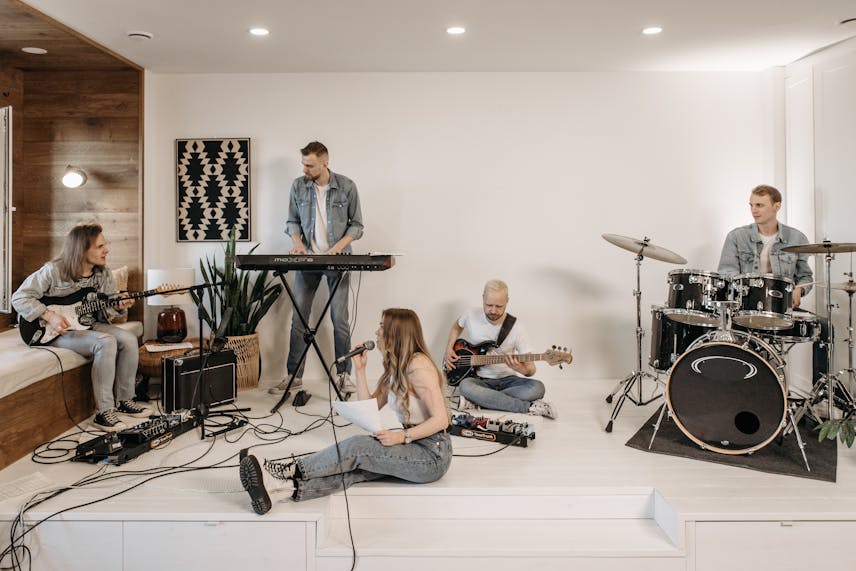When it comes to creating the perfect lofi track, the role of drums for lofi cannot be overstated. These percussive elements bring a distinctive groove and warmth that is essential to the genre’s laid-back feel. Understanding how to craft and integrate drums into lofi music is crucial for any producer looking to master this genre’s cozy and nostalgic sound.
The Heartbeat of Lofi: Crafting the Perfect Drum Sound
The drums in lofi music are often characterized by their dusty, vintage sound, which can be achieved through various production techniques. One popular method is to use samples from old vinyl records, which naturally contain the crackles and hisses that are synonymous with lofi aesthetics. Additionally, producers frequently employ methods such as bit-crushing and analog saturation to further dirty the drum sounds, giving them a lo-fi quality.
Another key aspect of lofi drums is the use of off-kilter rhythms and loose timings. This imparts a human feel to the music and avoids the mechanical precision often found in modern genres. By slightly nudging drum hits off the grid, producers can create a relaxed vibe that encourages listeners to unwind and relax.
Selecting the Right Drum Samples
Selecting the appropriate drum samples is a foundational step in lofi production. For snares and kicks, vintage drum machines like the Roland TR-808 or TR-909 are often sampled for their iconic sounds that blend seamlessly into the lofi palette. These classics provide a solid foundation but layering them with acoustic drum sounds can add depth and complexity.
Hi-hats and cymbals, meanwhile, are typically subdued and understated in lofi tracks. Instead of sharp, penetrating highs, lofi hi-hats are mellow and often feature a brushed or shuffling sound that complements the genre’s relaxed tempo.
Programming and Humanizing Lofi Drum Patterns
Programming drums for lofi music is all about balance. While it’s important to have a steady groove, it’s equally important to introduce subtle variations and human touches to avoid a monotonous loop. Many producers use a technique called ‘groove quantization,’ which slightly adjusts the timing of drum hits to mimic the natural inconsistencies of a live drummer.
In addition to timing, velocity variation plays a significant role in humanizing drum patterns. Randomizing the velocity of each hit can give the impression of a less robotic, more dynamic performance. Furthermore, incorporating ghost notes—quieter, secondary hits that occur between main beats—can add a level of sophistication and swing to the rhythm.
Integrating Drums with Other Elements in Lofi Music
Once the drums are crafted, they must be seamlessly integrated with other elements of the track. This often involves careful mixing, where the drums are given a warm, analog feel through the use of tube emulators or tape saturation plugins. It’s also common to roll off some of the high frequencies with a low-pass filter to ensure the drums sit comfortably behind the melodic elements, creating that cozy lofi ambiance.
Reverb and delay are used sparingly in lofi music, but when applied to drums, they can add space and depth. Typically, a short, room-style reverb is used to maintain the intimate atmosphere of the genre without making the drums sound distant or washed out.
Final Thoughts on Drums for Lofi
Creating the perfect lofi drums is a delicate art that involves blending old-school sounds with modern production methods. The goal is to evoke nostalgia and comfort, allowing listeners to sink into the music. A well-crafted lofi drum pattern doesn’t just keep time—it tells a story and sets the scene for the entire track.


